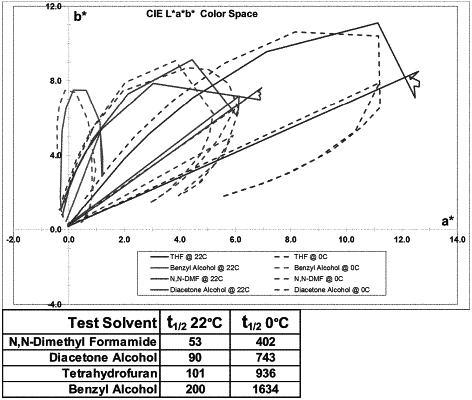| CPC G02B 5/23 (2013.01) [C09K 9/02 (2013.01)] | 5 Claims |

|
1. A method for forming an optical article comprising:
selecting a photochromic dye;
optimizing an intensity of a color response of the photochromic dye within a dye matrix by selecting a composition of the dye matrix immediately surrounding the photochromic dye and controlling a characteristic of the photochromic dye through control of hydrogen bonding or dipole-dipole interaction with said composition of the dye matrix immediately surrounding the photochromic dye;
isolating the dye matrix containing the photochromic dye into solid dispersed phase particles;
forming two types of the dispersed phase particles, one with a low glass transition temperature microenvironment and the other with a high glass transition temperature microenvironment;
combining the two types of the dispersed phase particles; and dispersing the two types of dispersed phase particles within a host phase layer distinct from the dye matrix containing the photochromic dye, the dispersed phase particles with the low glass transition temperature microenvironment exhibiting a fast initial activation response followed by a gradual increase to a final desired optical density by the dispersed phase particles with the high glass transition temperature microenvironment, decreasing said final desired optical density rapidly to a lower level than said final desired optical density by the dispersed phase particles with the low glass transition temperature microenvironment and fading gradually back to a leuco form by the dispersed phase particles with the high glass transition temperature microenvironment;
wherein the photochromic dye and the dye matrix are permanently contained within the two types of the dispersed phase particles and separate from the host phase layer.
|